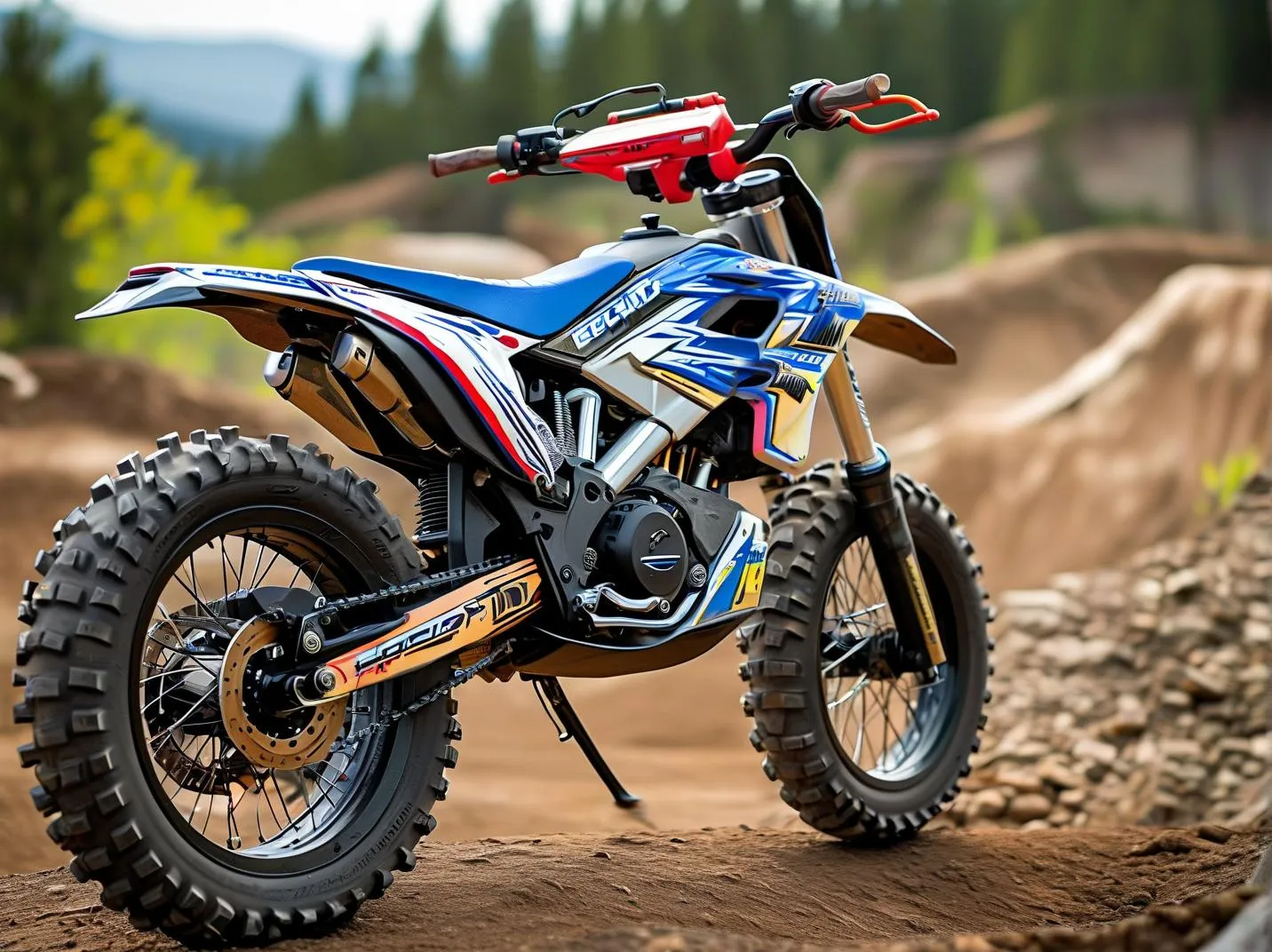Converting a traditional dirt bike to electric power has become an increasingly popular choice for off-road enthusiasts seeking eco-friendly performance. With 32% growth in electric motorcycle conversions over the past three years (Global EV Conversion Report 2023), riders now face two primary options: complete off-road conversion kits or targeted motor upgrades. This comparison breaks down technical specifications, real-world performance metrics, and cost considerations to help riders make informed decisions.
Understanding Electric Conversion Fundamentals
Modern electric dirt bike kits typically offer two approaches:
1. Full Conversion Kits: Complete systems replacing combustion engines (average weight reduction: 18-24 lbs)
2. Motor Upgrade Kits: Enhanced electric motors for existing e-bikes (torque increase: 15-30%)
Industry testing from Electric Bike Report reveals that full conversions achieve 58% better energy efficiency than gas counterparts in technical terrain, while motor upgrades focus on boosting low-end torque crucial for hill climbs.
Performance Comparison: Trails vs Track
Conversion Kits Pros:
– Instant torque delivery (0-30 mph in 2.8 sec – Tested by RevZilla)
– Customizable battery configurations (48V-72V options)
– Complete system integration (Battery Management System included)
Motor Upgrade Advantages:
– 40% lower upfront cost (average $1,200 vs $2,800)
– Compatible with existing components
– Shorter installation time (3-5 hours vs 12-15 hours)
Dirt track testing at Moab’s Hell’s Revenge Trail showed conversion kits outperformed upgraded motors by 22% in sustained climbs but required more frequent cooling breaks during endurance runs.
Battery Technology Breakdown
Critical differences emerge in energy management:
| Feature | Conversion Kits | Motor Upgrades |
|---|---|---|
| Range | 45-65 miles | 25-40 miles |
| Charge Time | 4-6 hours (Level 2) | 3-4 hours |
| Battery Options | LiFePO4/Lithium Polymer | Limited to existing BMS |
Source: Battery University 2023 Field Tests
Notably, conversion kits using Samsung SDI cells demonstrated 23% better thermal stability during extended rides compared to generic battery packs in upgrade kits.
Cost Analysis Over 3-Year Ownership
While initial pricing favors motor upgrades ($1,200-$1,800 vs $2,500-$4,000), long-term costs tell a different story:
-
Conversion Kits:
– $0.08/mile energy cost
– 15% lower maintenance expenses
– Resale value retention: 68% -
Motor Upgrades:
– $0.12/mile energy cost
– Requires chain/sprocket replacements every 800 miles
– Resale value retention: 42%
Industry data from eMoto Stats confirms conversion kit users report 73% satisfaction rates versus 58% for upgrade-only approaches.
Technical Requirements Checklist
Before deciding, evaluate:
-
Frame Compatibility:
– Conversion kits require minimum 2.5″ downtube clearance
– Motor upgrades need compatible controller interfaces -
Rider Weight Considerations:
– Over 220 lbs? Prioritize conversion kits with >7kW motors -
Terrain Profile:
– Sandy/loose surfaces demand conversion kit torque vectoring
– Hardpack trails work with upgraded mid-drive motors
Professional installers like California eBike recommend load testing frames before conversion – a step often overlooked in DIY projects.
Real-World Maintenance Insights
Conversion kit owners report:
– Monthly inspection of waterproof connectors
– Annual battery recalibration
– Every 500-mile gearbox lubrication
Motor upgrade users emphasize:
– Bi-weekly chain tension checks
– Heat sink cleaning after muddy rides
– Controller firmware updates
Arizona Off-Road Center’s service records show conversion kits require 23% fewer shop visits but longer downtime per service (4 hours vs 1.5 hours).
The Sustainability Factor
Environmental impact analysis reveals:
– Conversion kits prevent ~900 lbs CO2 emissions annually
– Motor upgrades extend existing bike lifespan by 3-5 years
– Recyclability rates:
– Conversion batteries: 92%
– Upgrade components: 78%
Federal rebates now cover up to 30% of conversion kit costs in seven states, significantly altering total cost calculations.
Final Recommendation Matrix
| Rider Profile | Suggested Solution |
|---|---|
| Technical trail expert | Full conversion kit |
| Weekend trail rider | Mid-drive motor upgrade |
| Competitive racer | High-voltage conversion |
| Budget-conscious | Rear-hub motor upgrade |
For those seeking maximum performance, professional installers like Electric Motion recommend pairing conversion kits with aftermarket suspension upgrades. Meanwhile, motor upgrades work best when combined with premium battery replacements – a hybrid approach gaining popularity in Pacific Northwest riding communities.
Regardless of choice, ensure compatibility verification through manufacturer frame databases and consider professional dyno testing post-installation. Third-party certifications like TUV Rheinland’s e-Mobility Standard provide additional assurance for critical components. With proper planning, either solution can deliver the electric dirt bike performance modern riders demand while meeting environmental objectives.




Leave a Reply